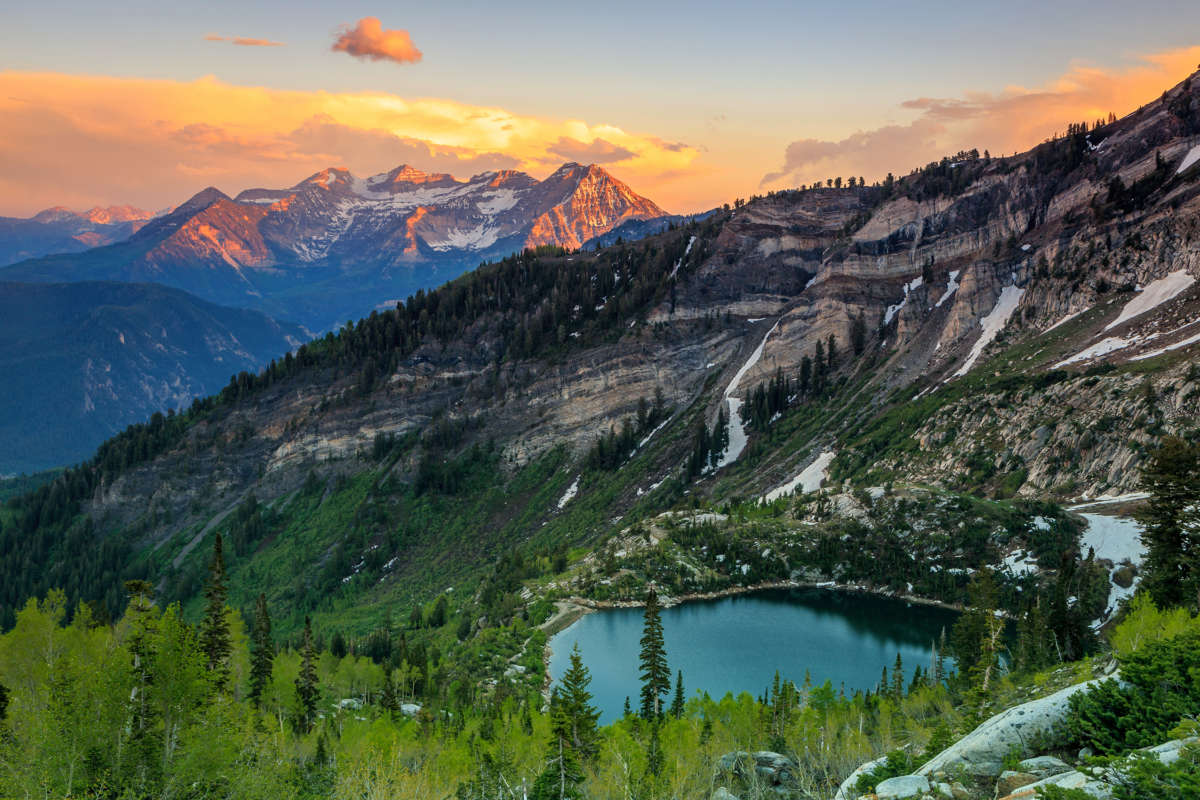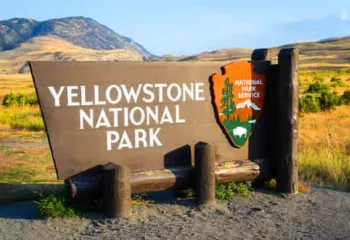Wild, vast, stark, whimsical and stunning. Utah is a magical place of diverse landscapes with enchanting geologic features. By area, Utah ranks as the 13th largest state in the U.S. and over 70 percent of the state is public land owned by the federal or state government. These lands include national forests, wilderness areas, state and national parks and monuments and more. For the adventure travelers who make their way to this amazing destination every year, this means that you can start walking from almost any point in Utah and are free to hit your stride moving in nearly any direction you please. From Utah's red-rock desert to its alpine mountaintops, the "Beehive State" is a natural playground that abounds with world-class destinations.
Salt Lake City
Most visitors touch ground in Salt Lake City, Utah's state capital. Flying in to Salt Lake International Airport immediately places you in a prime location for some great hiking!
Mount Timpanogos: This 11,749-foot behemoth is a popular destination southeast of the city center. As one of Utah's most recognizable mountains, it's beloved for its wildflowers in the spring and foliage in the fall. You can hike to the summit—one of the most frequently visited in the Rocky Mountains—along a 14-mile (round trip) trail that gains about 5,300 feet of elevation.
Antelope Island: Situated northeast of the airport, Antelope Island is the largest of ten islands located within the Great Salt Lake. This destination offers hikers eye-opening access to the lake and the surprising abundance of wildlife that calls the Great Basin, the largest area of contiguous watersheds in the US, home. Populations of wild antelope, bighorn sheep, mule deer, coyotes, bobcats, pronghorn and jackrabbits along with the oldest and largest herd of bison in the country roam freely on Antelope Island, providing visitors with a plethora of awe-inspiring wildlife viewing opportunities.
Big Cottonwood Canyon and Little Cottonwood Canyon: Located a mere half-hour from the airport are world-class rock climbing routes and hiking and mountain biking trails with vistas you'll want to write home about. And if you're into local history, you'll want to know the Mormon settlers quarried granite slabs from the mouth of Little Cottonwood Canyon to build the Salt Lake Temple. The trailheads found in and around these canyons are popular with the weekend warrior crowd, while the Uinta Mountains offer remote miles and beautiful solitude in their high, wilderness-designated peaks.
National Parks
After hitting up some of the hot spots near the airport, deciding where to head next might seem overwhelming. Utah has 33 state parks, five national parks, seven national monuments, two national historic sites, 33 state parks, four national forests, two national wildlife refuges and three national recreation areas... not to mention the roughly 22.9 million acres of public land managed by the Bureau of Land Management. While most visitors have their sights set on Utah's "Mighty Five" National Parks (Arches, Bryce, Canyonlands, Capitol Reef and Zion), the lesser-known (and therefore less crowded) destinations like Bears Ears National Monument, Snow Canyon State Park, the Dixie National Forest, Goblin Valley State Park and the Coral Pink Sand Dunes State Reserve are also well worth a visit. This is not to say that the "Mighty Five" aren't worth a visit... in fact, you really shouldn't pass up any opportunity you may have to see these incredible natural wonderlands. It's an experience you'll never forget!
Explore fantastical Bryce Canyon National Park, home to Dr. Seuss-ian hoodoos and ancient bristlecone pines (a photographer's dreamscape, especially if you make the effort to catch sunrise on the canyon rim) and the hidden treasure that is Capitol Reef National Park where you can see astounding geologic formations unique to the Waterpocket Fold, a 100-mile-long "wrinkle" in the earth's surface.
The adrenalized city of Moab, Utah is surrounded by world-class hiking and biking trails and is considered the quirky gateway to several of the national parks visited on Backroads Arches & Canyonlands Walking & Hiking Tour. Among the fantastic rock formations at Arches, you can hike to the iconic Delicate Arch (of Utah license place fame), precarious-looking Balanced Rock and the maze-like Fiery Furnace. Canyonlands National Park, with its picturesque Island in the Sky District, has many trails to rims-edge viewpoints where you stare thousands of feet down sandstone cliffs carved by the Green and Colorado Rivers—paradoxically demonstrating that some of the country's most arid country was shaped by water.
The entrance to Zion National Park sits on the doorstep of artistic and proudly local Springdale, Utah. Here you can find everything from adventure outfitters to gourmet dining options to local art galleries. Backroads Bryce & Zion Walking & Hiking Tour is a great introduction to these mesmerizing places. Our hiking routes take you deep into the red-hued contours of Zion Canyon, sculpted by the cooling waters of the Virgin River. You can also stride high up to a mesa for jaw-dropping views of this textured landscape or have a surreal walkabout in Bryce Canyon's famous hoodoo-filled Queen's Garden.
And Beyond
If you find yourself in southern Utah, Grand Canyon National Park—located just across the border in Arizona—is not far away! Considered one of the Seven Wonders of the Natural World, the 277-mile long, ten-mile-wide Grand Canyon was formed by millions of years of erosion, wind, rain and the Colorado River. An epic addition to any southern-Utah-based adventure, visiting the Grand Canyon might just blow your mind with its layer-cake geology... each tier representing a bygone era in our planet's rocky history. Backroads offers a variety of Multi-Adventure Tours that take you to Bryce and the Grand Canyon. When you join the Backroads Bryce & Grand Canyon Multi-Adventure Tour, you'll stay in classic national park lodges built in the distinctive style known as 'parkitecture.' You'll hike among ponderosa pines or rocky cliffs during the day and then don some warm layers for cool nights of star-gazing... a welcome reprieve from what can sometimes be hot and dusty days hiking down into the canyon itself.
Part of the desert's charm, of course, is its myriad contrasts. Water sources are few and far between, but spring and fall can bring torrential rains so hikers must be prepared to carry multiple water bottles to slate their thirst during outings. Roads (and the amenities along them) are likely to be few and far between, but the places they take you to and the people you'll meet will have character that stretches for miles.



















